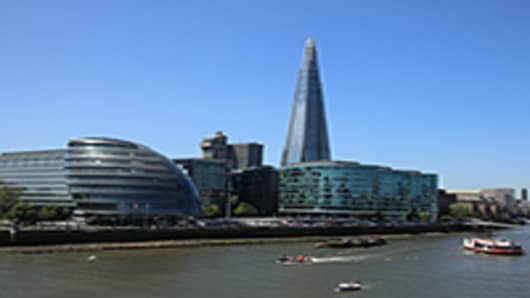Property consultants Savills suggest that for prime London property the premium for higher floors might rise in increments of 2.5 percent to 3 percent, or £25,000-plus per floor. But the real premium comes with penthouse properties where, one consultant tells me, “the increases are without rules!”
In Manhattan, high-rise living is nothing new, but even there the new generation of super-tall buildings is as much residential as commercial. Realtors are eyeing French architect Christian de Portzamparc’s One57, a 90-story, 300 meter tower on West 57th Street.
New York real estate broker Charlotte van Doren of Stribling & Associates says: “One57 has been like a bellweather. One penthouse is being marketed at $115 million [which would make it Manhattan’s most expensive apartment]. Another six-bedroom penthouse in 15 Central Park West [designed by Robert A.M. Stern] is on for $85 million.”
Is this move from the traditional mid-rises of the Upper East Side and the traditional brownstones fuelled by foreigners who have different desires from the locals? “I think it’s partly empty-nesters driving the market, couples who want a change, a ‘wow’ experience,” she says.
But even New York looks low rise beside the burgeoning skylines of Asia. Hong Kong is the highest rise city, its upstanding monuments including the 68-storey Cullinan Towers, once containing the world’s most expensive apartments, though since left far behind. For most Hong Kong residents there’s no choice but to live in a high rise, and once you’ve accepted that the higher the better. The more high rise a city is, the greater the premium for a higher floor.
In mainland China, the skyscraper boom shows no signs of abating: the country boasts more than half the world’s skyscrapers. James MacDonald, head of Savills China Research, says, “If you want a new build in a downtown location, new-build high rise is pretty much the only option. The predominance of high rise in China is the result of government policy.”
What is more surprising is the burgeoning skylines of towers in second and third-tier cities. Shanghai-based Greenland is developing the Greenland centre in Wuhan, a $4.8 billion scheme centred on a 606-meter tower designed by Adrian Smith (architect of the Burj Khalifa), including 50,000 square meters of “luxury” apartments.
The same developer is also building super-tall towers in Dalian and Nanjing. These are less to do with demand than civic boosterism – a symbol that a city has arrived on the international scene. Whether there is demand is questionable.
Towers create their own landscape. In architecturally undistinguished settings, they create a sense of modernity and financial dynamism. In New York or London, towers command high-rise prices where there is a view, a park, the river, landmarks. In cities where there is little to see the view becomes, ironically, all the more important.
Even the streets of Mumbai can look good from an apartment in the sky. Lodha Group’s 117-story World One, designed by U.S. architects Pei Cobb Freed & Partners, is being billed as the world’s tallest residential building. The most expensive apartment is expected to fetch $10 million.
India also attracted headlines with the world’s first family skyscraper, Mukesh D. Ambani’s astonishing 27-storey home for himself and his family in Mumbai. The building boasts three helipads, six storeys of parking garages and “floating gardens”. Oligarchitecture.
If the skyscraper is a cipher for the ego of a developer, an architect or a city, then how much more of a statement is it when it is a house?
It used to be said that verticality was the way to read the changing nature of power in a city. First there were the cathedral spires, then there were the mills and factory chimneys. These were followed by the towers of corporate commerce in the 20th century and now we have skyscrapers for the few individuals of the global elite.


